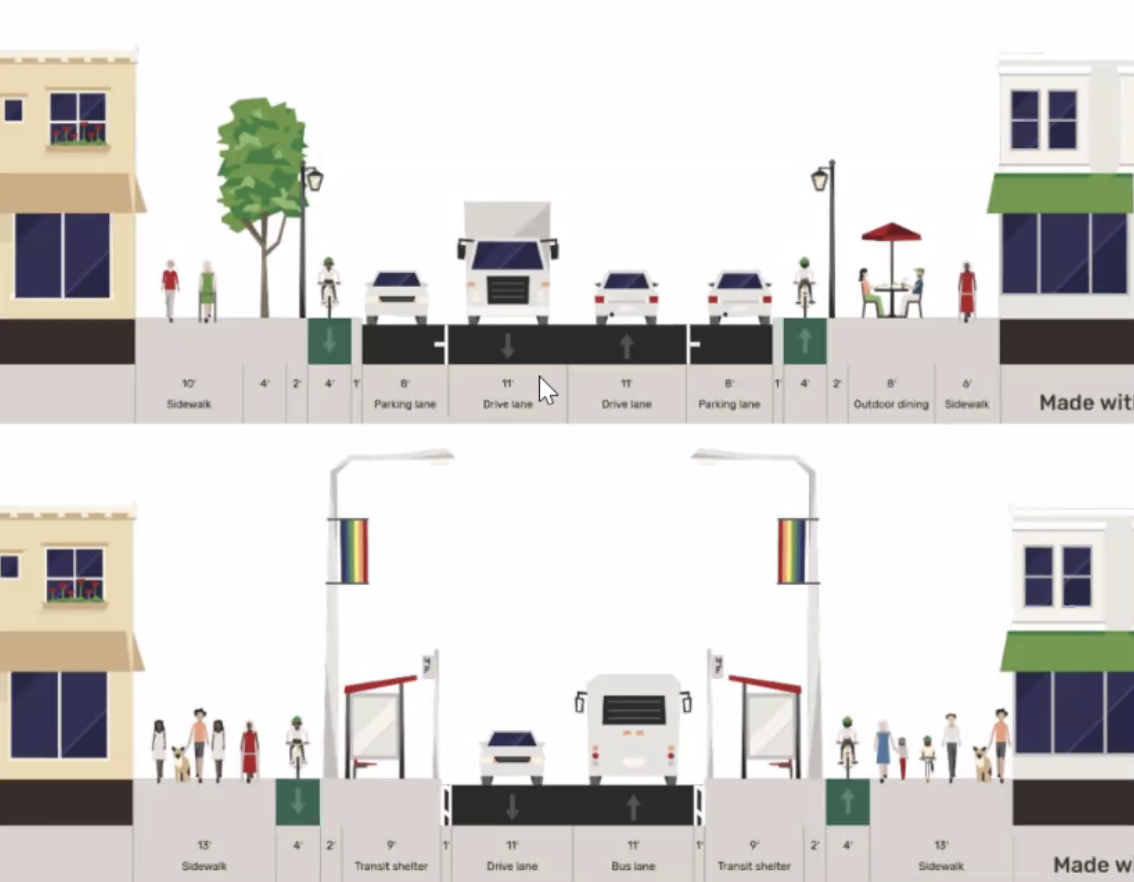Para leer este artículo en español, haga clic aquí.
South Chicago, situated at the mouth of the Calumet River, has an industrial past. Steel mills provided economic opportunities for people in the late 1800s. This created a diverse neighborhood, and South Commercial Avenue became one of the most vibrant commercial corridors in Chicago in the early 1900s. But as the U.S. steel industry became less competitive and shrank during the late 20th Century, South Chicago experienced job loss, economic hardship and population decline.
In an effort to revitalize this important corridor and as part of city’s INVEST South/West initiative, there is a current project to redesign Commercial Avenue. This Complete Streets project includes major streetscape improvements on Commercial between 83th and 93rd streets, with additional improvements on 92nd Street from Anthony Avenue to South Harbor Avenue. The project “will provide the area with safe, walkable, attractive streets that will foster community and economic growth,” the city promises. Commercial Avenue is important not only because of its historical significance but because it is also a connecting street and gateway to other major roadways like South Chicago Avenue.
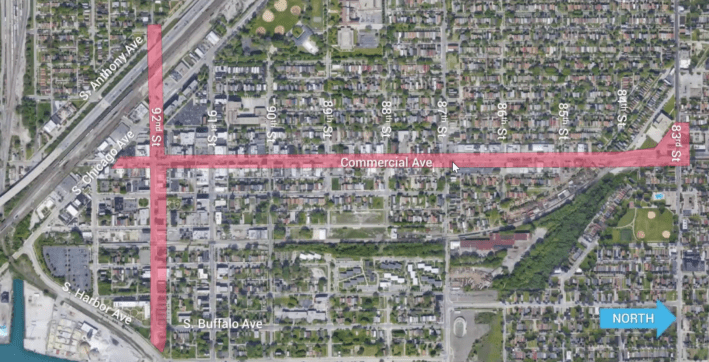
In July 2016, South Chicago’s Commercial Avenue Revitalization Plan was released. This plan was spearheaded by UIC Great Cities Institute, South Chicago Chamber of Commerce, and Special Service Area #5. Through a one-year community-engaged planning process, one major goal of the plan was to encourage the use of diverse transportation options, including active modes like walking and biking. The strategies from the plan to increase walking and biking along Commercial included working with CDOT to develop bike lanes, encouraging bicycle education, building curb extensions with crosswalks and curb ramps that are accessible to people with disabilities, and planting trees to ensure a healthy canopy.
CDOT’s Streets for Cycling Plan 2020 goal was to build a citywide network by 2020 that provides bike accommodations within a half mile of every Chicagoan. In the bike plan, Commercial Avenue and 92nd were identified as Neighborhood Bike Routes, serving local destinations. Similarly, in 2015, Commercial Ave was designated a Pedestrian Street from 88th St to 92th Street in Chicago’s Pedestrian Plan. The P-Street designation regulates design to preserve and enhance the character of Chicago’s pedestrian-oriented shopping districts by prohibiting types of development that degrade the walking environment by breaking up the sidewalk with driveways, such as drive-throughs and strip malls.
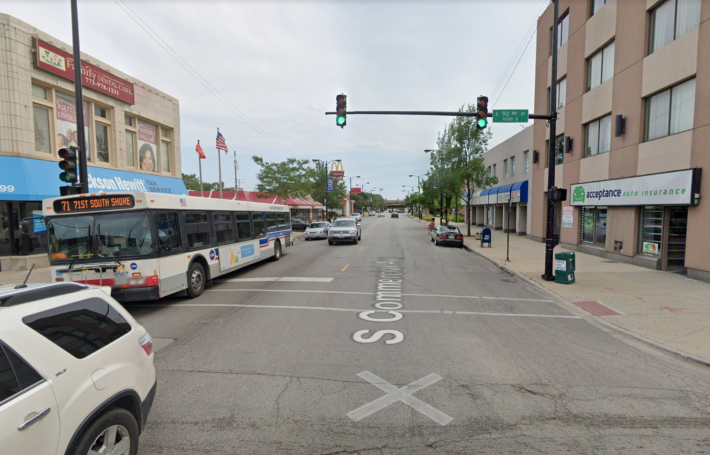
The Chicago Department of Transportation held the first Commercial Avenue Corridor online public meeting last July. In addition to CDOT, the team working on this project includes the 10th Ward, Special Service Area 5, the Chicago Department of Planning and Development, and several consulting firms. The meeting was held in English, Spanish and American Sign Language. During the first meeting, the Commercial Corridor team discussed the existing conditions on Commercial and 92nd, including crash data and unsafe intersections. They gathered feedback on people’s experiences with transportation, focusing on pedestrian issues. They also collected input on design and placemaking elements; the location and look of gathering spaces; art; and more.
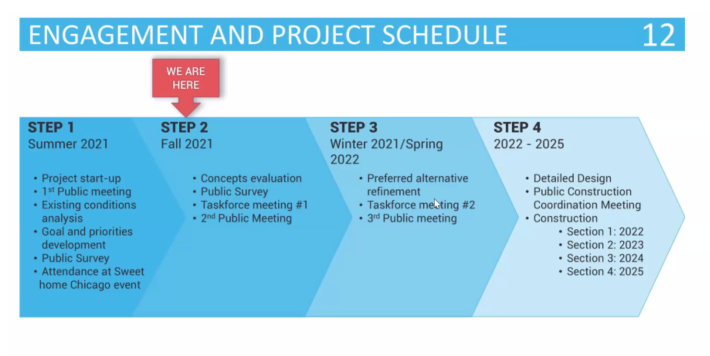
The second Commercial Avenue Corridor meeting was held last week to gather feedback on placemaking design and aesthetics. CDOT focused on the goals of creating a cohesive design scheme to brand the corridor with a cultural and historical identity that reflects the community, also enhances the pedestrian environment.
The team reported on the feedback from the first Commercial Avenue meeting. This input reiterated previous corridor concerns, which include: the pedestrian experience, parking, lack of green space, lighting, and lack of bicycle infrastructure. The most challenging intersections are Commercial/91st and Commercial/92nd. This area has a high amount of pedestrian traffic as well.
CDOT provided descriptions of safety improvements that will be added to improve the streets for vulnerable users, such as sidewalk bump-outs to shorten crossing distances, and bus bulbs – extensions of the sidewalk that allow bus drivers to pick up passengers without having to leave the travel lane. CDOT will also add a bike lane on Commercial Ave that is raised and delineated from vehicular traffic. This means there will be some kind of physical barrier; however, the final design was not presented.
The project scope includes:
- Roadway geometry and intersection improvements
- Full width repaving
- Drainage improvements
- Sidewalk, curb, and gutter
- Curb extensions
- Accessible ramps and crosswalks
- Street lighting
- Traffic signal upgrades
- Improved signs
- Side street improvements to the alleys, as needed
- Bike lanes
- Site furniture and potential seating areas
- Light pole identifiers
- Tree planting and potential landscaping
- Potential plaza at the cul-de-sac on 92nd west of South Harbor
The rendering of the cross-section of the proposed midblock roadway shows two mixed-traffic lanes, paid curbside parking, a a raised bike lane, and a street furniture zone. The rendering of the cross-section of the street at intersections replaces the paid parking with bus bulbs.
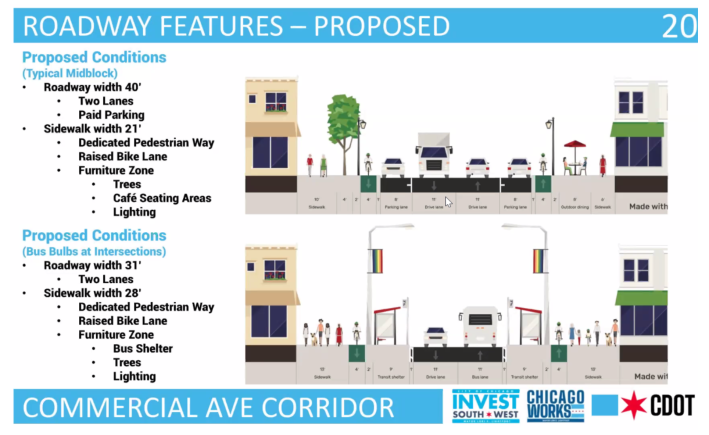
The corridor construction improvements are split in four sections, including three sections on Commercial and one section on 92nd. CDOT will hold one public meeting early next year, and construction on the first section is set to begin next fall. Construction of the fourth section will won't wrap up until 2025.
There are also plans to encourage recreational use of the Calumet River. A community nature play area and river access are being designed and will be completed by Summer or Fall 2023. Hopefully all these improvements help bring back vitality and investment to the community.
For information and recordings of the two virtual meetings, or for questions or comments on this project, please visit the Complete Streets project page.
